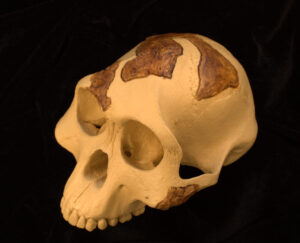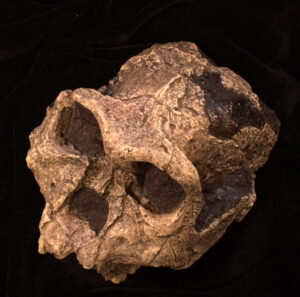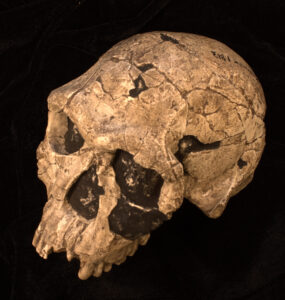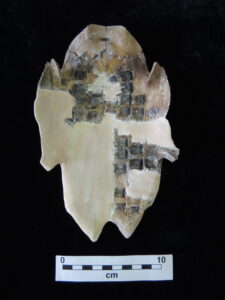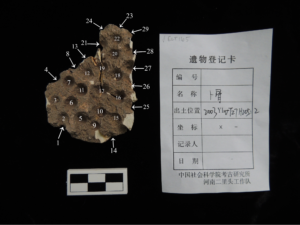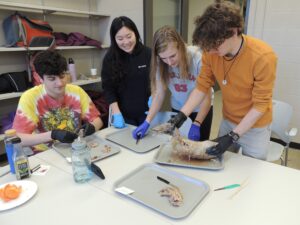Australopithecus afarensis AAC Catalogue Number: 2004.11.38Dates: 3.6 – 3.0 million years agoGeographic Range: East AfricaAnatomical Features: Evidence of bipedalism indicated by the shift in location of…
Australopithecus africanusAAC Catalogue Number: 2005.2.2Dates: 3 – 2.2 million years agoGeographic Range: South AfricaAnatomical Features: Relatively short compared to other hominins, estimated at around four to…
Australopithecus (Paranthropus) robustusAAC Catalogue Number: 2004.11.7Dates: 1.8-1 million years agoGeographic Range: South AfricaAnatomical Features: Large teeth with thick enamel for chewing tough foods.Large zygomatic arches and…
Homo habilisAAC Catalogue Number: 2004.1.18Dates: 2.3-1.7 million years agoGeographic Range: East AfricaAnatomical Features: Apelike, consistent with other semi-arboreal australopithecines.Technology Used: Homo habilis utilized Mode I (Oldowan) industries. Diet: Fruits and tubers likely…
3D Scanning Wesleyan University recently purchased an Artec Space Spider 3D scanner. The scanner is housed in the Environmental Archaeology Lab, and models can be…
Animals in China East Asia was once home to a wide variety of animal species that have been displaced over the last few thousand years…
Oracle Bones in East Asia Project Photo by Katherine Brunson Oracle bones are a special type of bone artifact used for divination rituals. They are…
Archaeologists normally spend our summers excavating. Due to COVID-19, several Wesleyan students and archaeology faculty members spent this summer digging into data! Audrey Lam (class…
Boiling Bones! Spring 2020 Professor Brunson’s course ARCP257: Environmental Archaeology examines how data gathered from ancient plant remains, animal remains, and soils can be used…
Teaching with Collections During COVID-19 Fall 2020 Report by Dr. Wendi Field Murray, Collections Manager for the Wesleyan University Archaeological and Anthropological Collections. Reposted from…

